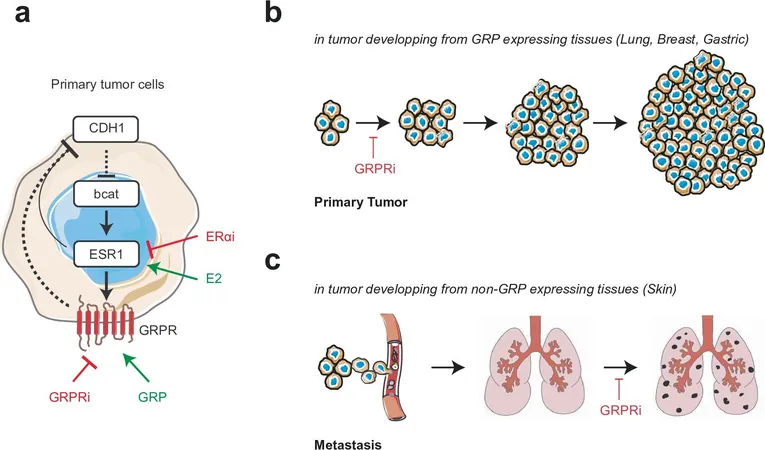
Revolutionary Discovery: Scientists Unveil Molecule That Could Transform Sepsis Treatments
2025-01-18
Author: Li
Groundbreaking Study on Sepsis
In a groundbreaking study, a team of scientists from Oregon Health & Science University (OHSU) has unveiled crucial insights into sepsis, a life-threatening condition responsible for an alarming eight million deaths globally each year. Their research reveals how a specific molecule found on certain bacteria may significantly influence blood clotting in sepsis patients, sparking hope for enhanced treatment options for critically ill individuals.
The Role of Lipopolysaccharide (LPS)
The researchers focused on the role of lipopolysaccharide (LPS), a molecule visible on the surfaces of various bacteria, including the notorious E. coli. Their findings indicate that LPS can directly activate blood proteins responsible for clotting, initiating a harmful cycle that obstructs blood flow and can subsequently damage vital organs. A particular strain of LPS, identified as O26:B6, was found to be exceptionally effective at triggering these dangerous clotting responses.
Study Methodology and Findings
Published in the prestigious Journal of Biological Chemistry, this study was conducted using nonhuman primates and demonstrated that when LPS-containing bacteria invade the bloodstream, they instantly provoke a clotting cascade involving proteins such as factor XII. Joseph Shatzel, a physician-scientist at OHSU, pointed out the significance of factor XII in this process. He noted, "Individuals born without factor XII remain healthy and do not experience abnormal bleeding," suggesting it as a promising target for new therapies that could halt dangerous clotting without risking excessive bleeding.
Towards Precision Therapies
Lead author and postdoctoral scholar Andre L. Lira highlighted the importance of understanding how the physical characteristics of bacterial surfaces trigger the clotting response. Sepsis can occur following infections from various sources including bacterial, viral, or fungal pathogens. Lira explained, “Even when the infectious bacteria are identified, varying strains can exhibit different behaviors. By delving into these differences, our goal is to develop precision therapies tailored to individual cases.”
Future Directions in Sepsis Treatment
The research team is actively pursuing experimental treatments targeting factor XII, including novel antibodies designed to inhibit its clotting activity. With innovations such as these on the horizon, the potential exists for precision medicine strategies that could transform the management of sepsis and improve survival rates for those most at risk.
Conclusion
As the medical community awaits further advancements stemming from these findings, one thing is clear: understanding the interplay of bacteria and the human body's clotting mechanisms may soon lead to life-saving therapies that change the landscape of sepsis treatment forever!




 Brasil (PT)
Brasil (PT)
 Canada (EN)
Canada (EN)
 Chile (ES)
Chile (ES)
 Česko (CS)
Česko (CS)
 대한민국 (KO)
대한민국 (KO)
 España (ES)
España (ES)
 France (FR)
France (FR)
 Hong Kong (EN)
Hong Kong (EN)
 Italia (IT)
Italia (IT)
 日本 (JA)
日本 (JA)
 Magyarország (HU)
Magyarország (HU)
 Norge (NO)
Norge (NO)
 Polska (PL)
Polska (PL)
 Schweiz (DE)
Schweiz (DE)
 Singapore (EN)
Singapore (EN)
 Sverige (SV)
Sverige (SV)
 Suomi (FI)
Suomi (FI)
 Türkiye (TR)
Türkiye (TR)
 الإمارات العربية المتحدة (AR)
الإمارات العربية المتحدة (AR)